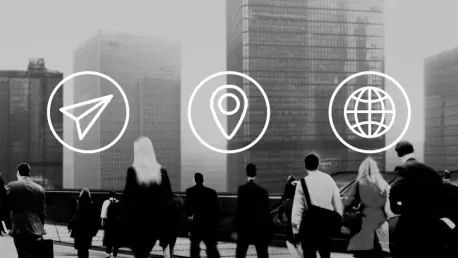Location-based marketing (LBM) is a powerful strategy that leverages data from online and mobile devices to target individuals based on their location or location history. This approach aims to make marketing content more relevant to potential customers, thereby enhancing engagement and fostering business growth. In this article, we will explore the various aspects of LBM, including its definition, techniques, data utilization, and practical examples.
Understanding Location-Based Marketing
What is Location-Based Marketing?
Location-based marketing refers to the use of data derived from online and mobile devices to identify user locations or their location histories. By leveraging this data, businesses can deliver tailored content at the right time and place. This method assists in pinpointing potential customers who are in close geographical proximity to a business or event, thus increasing the likelihood of real-time engagement and conversions. Receiving a text about a pop-up event at your favorite online store, just as you’re nearby, exemplifies effective LBM—it targets you when you’re most likely to act on the marketing prompt.
Businesses utilize LBM to maximize customer engagement by sending location-specific notifications or advertisements. For instance, restaurants can notify nearby customers about daily specials or discounts during off-peak hours. Retail stores might alert customers to flash sales just as they are walking by. These real-time, highly relevant messages are more likely to capture attention and provoke immediate action, leading to increased foot traffic and sales.
Types of Location-Based Marketing Techniques
IP Targeting
IP targeting uses unique IP addresses associated with customers’ devices to determine their specific location. This technology allows platforms like Google to provide personalized search results based on the user’s locality, such as showing ‘Thai restaurants near me’ when queried. IP targeting is particularly useful for businesses that want to reach a broad audience within a specific geographic area. By understanding the IP addresses of potential customers, businesses can tailor their marketing efforts to meet the needs and preferences of local consumers.
Using IP targeting, businesses can also segment their audience based on location, delivering more personalized and contextually relevant ads. For example, a local bookstore can promote its store events to book lovers living in the vicinity. This technique is advantageous when aiming for wider geographic areas without requiring the granular precision of other methods like GPS targeting. Overall, IP targeting’s capacity for broad-spectrum localization makes it a versatile tool in a marketer’s arsenal.
GPS Targeting
This method employs GPS data instead of IP addresses for localization. Mobile apps use GPS targeting to send personalized push notifications based on the user’s specific geographic position. For example, a message offering discounts on warm clothing during an unexpected cold snap can be sent to users in the affected area. GPS targeting is highly effective for real-time marketing efforts as it allows businesses to engage with customers at the exact moment they are near a store or event, increasing the chances of immediate action and conversion.
Real-time offers can leverage current environmental conditions and user behavior, making the marketing content even more compelling. For instance, a coffee shop could send a promotion for hot drinks when temperature drops, appealing directly to users’ immediate needs. Furthermore, GPS targeting is invaluable for event-based marketing, such as for a music festival where vendors can reach out to attendees with exclusive offers and promotions, thereby enhancing the overall user experience.
Geofencing
Geofencing utilizes GPS to create a virtual boundary around a specific area. Businesses can define these virtual perimeters around their stores or events and send targeted messages to users who enter this predefined zone. This approach can be especially effective during events like conferences. Geofencing enables businesses to capture the attention of potential customers as they enter a specific area. By sending timely and relevant messages, businesses can drive foot traffic and increase engagement with their brand.
During large-scale events or sales, geofencing can transform a generic marketing strategy into a highly targeted operation. For example, a retail store could notify customers about in-store promotions as they approach the premises. Restaurants near sports arenas might use geofencing to attract fans with special post-game deals as they leave. This close-to-real-time interaction can significantly influence consumer decisions, making geofencing a potent tool for driving on-the-spot purchases and engagement.
Geoconquesting
This technique involves geofencing around competitor locations, aiming to lure customers away by offering them compelling promotions or discounts, thus positioning your brand as a favorable alternative. Geoconquesting is a competitive strategy that allows businesses to attract customers from their competitors. By offering attractive deals and promotions, businesses can entice customers to choose their brand over others.
For instance, a coffee shop might set up a geofence around a rival’s location and send discount codes to users nearby, drawing them in with a better offer. This not only increases foot traffic but also offers a chance to win over new customers who might not have considered switching brands otherwise. Geoconquesting thrives on the principle of opportunism, catching potential customers at a moment when they are already in the market for a specific product or service, but potentially swaying them toward your offerings instead.
Beaconing
Otherwise known as proximity-based marketing, this method uses beacons, or connected devices, to create zones of influence. When customers come within the range of these beacons, they receive targeted messaging designed to engage them at that specific moment. Beaconing is an effective way to engage customers in-store. By sending personalized messages and offers, businesses can enhance the shopping experience and encourage purchases.
For example, a retailer can use beacons to send a promotional offer to customers as they walk by a specific product, increasing the likelihood of impulse buying. Museums can enrich visitor experiences by offering additional information or interactive features triggered by their proximity to an exhibit. The granularity of beaconing makes it highly effective for creating tailored, immersive customer experiences that resonate deeply and foster higher levels of engagement and satisfaction.
Leveraging Location Data
Gather Consumer Data
Collecting and analyzing location-based data helps businesses understand consumer behavior, preferences, and trends. This information can highlight which locations are most pertinent to the brand, thus aiding in refining the LBM strategy. For example, identifying that a target audience frequents upscale farmers markets can shift the focus to hyperlocal marketing strategies targeting those specific areas. By understanding where their customers are and what they are interested in, businesses can create more effective marketing campaigns. This data-driven approach ensures that marketing efforts are targeted and relevant, increasing the chances of success.
By leveraging this location data, businesses can also track the effectiveness of their campaigns and adjust strategies in real time. Such adaptability is crucial in maintaining a competitive edge and ensuring a responsive marketing approach. By continually updating and refining data, companies can stay attuned to evolving consumer behaviors and preferences, allowing for highly tailored marketing initiatives that resonate deeply with their intended audience. This method not only drives immediate engagement but can also foster long-term customer loyalty.
Localize Creative Content
Developing creative content that resonates with a specific geographic audience is crucial. Tailoring the language, imagery, and overall message to reflect local nuances and preferences can significantly enhance engagement. Businesses should consider employing localized content based on what sells best in that area. Localized content helps businesses connect with their audience on a deeper level. By reflecting the unique characteristics and preferences of a specific area, businesses can create a more personalized and engaging marketing experience.
For example, a brand might use regional dialects or cultural icons in their advertisements to create a more relatable and impactful campaign. A seasonal campaign tied to local festivals or holidays can also drive significant interest and engagement. The more a business understands and integrates local culture and preferences into its marketing efforts, the stronger the connection it can build with the audience, fostering a sense of familiarity and trust. This personalized approach can be a game-changer in differentiating a brand from its competitors.
Optimize Timing
The timing of delivering these messages is critical. Whether just as customers enter a defined area or a few days after they’ve visited, the timing should be strategic to maximize impact and relevance. For example, sending reminders or promotions a couple of days after a store visit can re-engage customers who may need a little nudge. Timing is everything in marketing. By delivering messages at the right moment, businesses can increase the chances of engagement and conversion. Strategic timing ensures that marketing efforts are not only relevant but also effective.
Understanding peak times for customer activity can further refine timing strategies. For instance, analyzing foot traffic data might reveal the best times of the day or week to send promotional messages, boosting the likelihood of a positive response. Additionally, following up with customers after specific events, like purchases or store visits, with timely offers or appreciation messages, can significantly boost repeat business. Optimal timing makes marketing efforts feel personalized and spontaneous, enhancing customer experience and driving greater engagement.
Case Study: Glossier’s LBM-Powered Campaign
Innovative Use of LBM
An illustrative example from the article showcases Glossier’s innovative use of LBM in promoting its Boy Brow Arch product. The company initiated a scavenger hunt by placing posters with unique QR codes in major cities. Only those who scanned the codes using the Shop app could gain early access to the product. This strategy not only garnered attention but layered an interactive experience with the core LBM strategy. By creating excitement and exclusivity around the product launch, Glossier effectively engaged its audience, converted interest into action, and drove substantial traffic and sales.
The success of this campaign highlights how creative use of LBM can generate buzz and build deeper connections with customers. Not only did it foster a sense of community and participation among Glossier’s audience, but it also harnessed the power of real-time, localized engagement. The campaign’s exclusivity and interactive element made it stand out, proving that LBM strategies can go beyond simple push notifications and become an engaging, memorable part of a brand’s marketing efforts.
Conclusion
Location-based marketing (LBM) is a highly effective strategy that uses data from online and mobile devices to target individuals based on their current location or location history. This method seeks to provide more personalized and relevant marketing content to potential customers, which in turn can lead to higher engagement rates and increased business growth.
LBM enables businesses to reach their audience in a more meaningful way by delivering messages that are contextually relevant to where the customer is or has been. For example, a coffee shop may send a discount coupon to a customer who is nearby, enticing them to visit the store. Alternatively, a retail store may text a special promotion to someone who frequently shops in that area.
This marketing approach relies on various techniques and technologies, including GPS, Bluetooth, and Wi-Fi signals, to gather precise location data. Marketers then analyze this data to understand customer behavior, preferences, and trends, allowing them to craft highly targeted marketing campaigns.
Data utilization is critical in LBM, as it helps businesses to create personalized experiences that resonate with their audience. This tailored approach not only boosts customer satisfaction but also enhances brand loyalty.
In summary, location-based marketing is about making marketing efforts more relevant and effective by using location data to deliver personalized content, ultimately driving engagement and business growth. By leveraging the power of data and technology, businesses can connect with their customers in a highly targeted and impactful manner.









